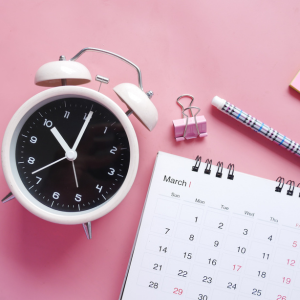
One of the most common questions I am asked by women wanting to follow the WomanCode protocol and sync their diet, exercise and lifestyle to their menstrual cycle is: “How do I know where I am in my cycle?” If you’re not experiencing clockwork periods every 26-32 days, and if you’ve picked up my book or found my site then there’s a good chance that you are not experiencing this, then figuring out whether you’re in your follicular or luteal phase can seem like a conundrum.

I don’t want this to worry you as it’s simple to untangle. So, let me walk you through the 3 most common types of irregular cycles and how you can cycle sync with each starting TODAY.
The WomanCode protocol is designed so that within a few months of following the plan you will once again experience regular periods and feel totally comfortable and confident about where you are in your cycle and know when to expect your period, whether you’ve previously had PCOS or just some random irregularities.
But, when you first get started you want to maximize the benefits of your food choices. As I said, by just following the plan laid out in my book you should see regular cycles within months. You can, however, speed up the process considerably by committing to the full Flo Living program with the additional support from me and the other Flo coaches.
To help you on your way to better and regular periods, no PMS, no cramps, high energy, suped up sex drive, and healed hormonal health issues, I’m going to go over some common cycle scenarios. That way, you can start following the WomanCode protocol ASAP and get your body back on track.
The 3 most common types of irregular menstrual cycles
Period Delay Type 1 - Too long - Either you’re not making enough hormones to ovulate and you’re experiencing a perpetual follicular phase; or you are not making enough progesterone and staying in the luteal phase post-ovulation for far too long.
How to cycle sync - Figure out which issue you are dealing with first. Thankfully it’s not too hard to do. The most scientifically accurate way is to take your basal body temperature every morning when you wake up. When you ovulate, your temperature will shift and indicate your body is entering the luteal phase. This can also help you to predict when you will see your period. You could do this with a regular thermometer and read “Taking Charge of Your Fertility” by Toni Weshler to understand how to interpret your temperature data to know which phase you are in, or you can use any one of the new fertility monitors and apps, which does all the interpreting and analysing for you and let’s you know if and when you have ovulated. You can additionally monitor the other signs your body will provide - if you are experiencing a long follicular phase then you will have constant vaginal dryness and if you’re in your luteal phase for weeks you will be experiencing bad PMS symptoms like mood swings and bloating. Monitor your cycle for at least 3 months to figure out the issue you are dealing with. One cycle can be thrown off by stress, antibiotics, illness, alcohol consumption, over exercise - delaying ovulation. But 3 months of monitoring will show a pattern you can work with. Then, start with the phase that you are experiencing for the longest - follicular or luteal - and eat the foods listed for that phase and follow the plan for that part of your cycle. Then move forward through the protocol every 7 days - so 7 days luteal/follicular, 7 days ovulatory/menstrual and so on. This will support your body and help you to balance your hormones, so that you can then progress to the next phase and the next. Your body will be prompted to follow suit.
Period Delay Type 2 - Too short - A short cycle (we’re talking less than 26 days) is a sign that your thyroid is under-performing. First of all, read up on thyroid disorders with my previous post on this problem. I have tips on how to support your thyroid more effectively without pharmaceuticals. Usually this means you have a very short luteal phase.
How to cycle sync - Figure out where you are in your cycle using the methods mentioned above. Then focus on the luteal phase foods. Eating more of these will help you support your thyroid and progesterone levels and make your luteal phase longer and more regular (ideally it should be at least 10 days long and at best 14 days long.
Period Delay Type 3 - No period for months - Not seeing your period for months on end suggests you are in a very long follicular phase most of the time. You’re body is only ovulating very occasionally, if at all.
How to cycle sync - Start with the foods in the follicular phase and progress every 7 days to the next phase in the cycle regardless of what your body appears to be doing. For many, many women I’ve worked with this is enough to kickstart their reproductive hormonal system and they see their period return quite rapidly. We have testimony after testimony from those women who are Flo Living graduates who have gotten their periods after months, even years of it going M.I.A (see here and here).
Always remember, that once you have the right information about how your body really works, you can start making health choices that finally start to work for you! You can do this - the science of your body is on your side!
To your FLO,
Alisa



